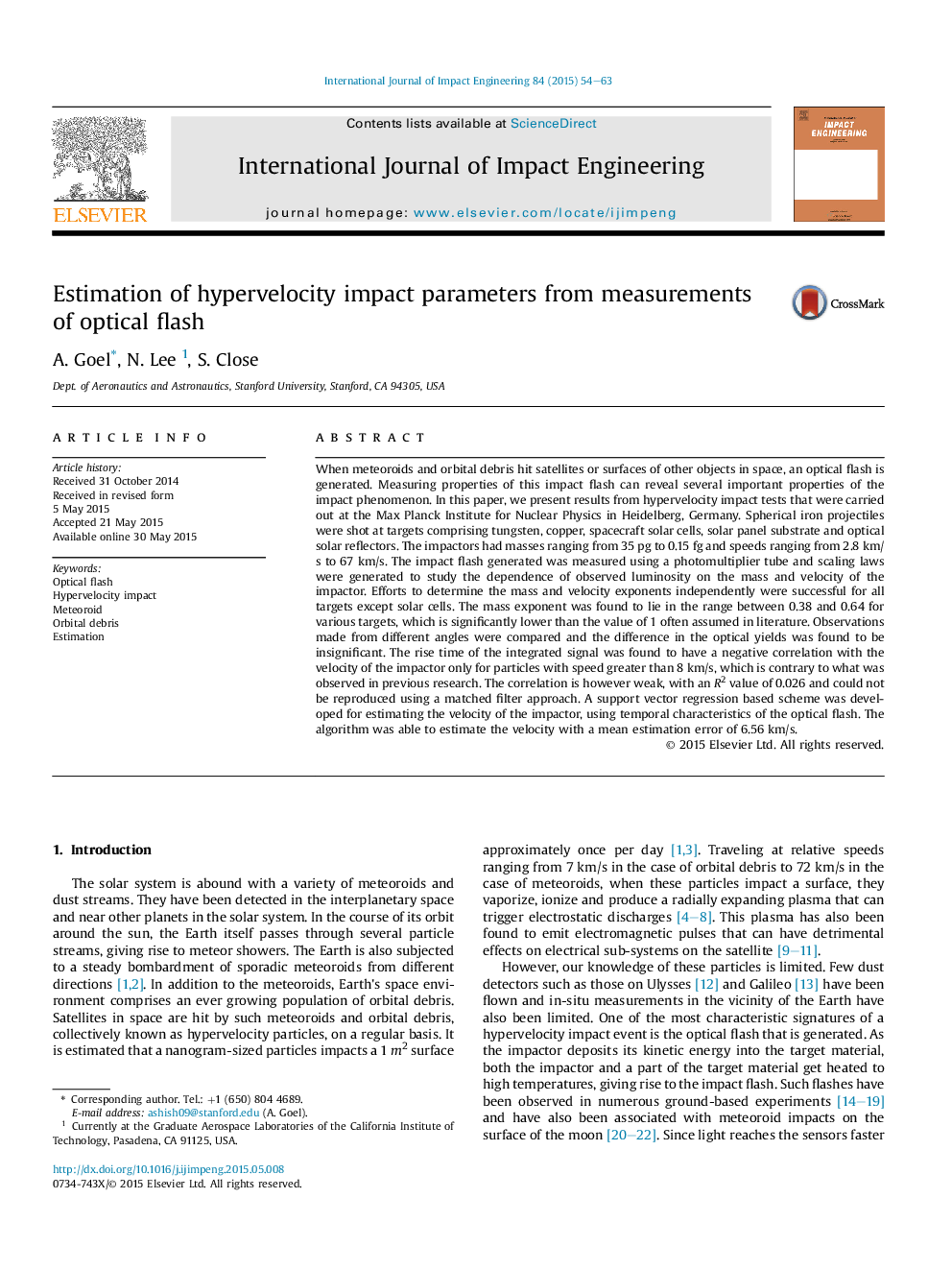| کد مقاله | کد نشریه | سال انتشار | مقاله انگلیسی | نسخه تمام متن |
|---|---|---|---|---|
| 779238 | 1464067 | 2015 | 10 صفحه PDF | دانلود رایگان |

• We present hypervelocity impact flash data for large variety of targets.
• We present scaling laws to study the dependence on mass and velocity of the impactor.
• We analyze the variation of optical yield with observation angle.
• We examine the correlation between impact speed and rise time of the signal.
• We develop a scheme to estimate impact speed from temporal characteristics of signal.
When meteoroids and orbital debris hit satellites or surfaces of other objects in space, an optical flash is generated. Measuring properties of this impact flash can reveal several important properties of the impact phenomenon. In this paper, we present results from hypervelocity impact tests that were carried out at the Max Planck Institute for Nuclear Physics in Heidelberg, Germany. Spherical iron projectiles were shot at targets comprising tungsten, copper, spacecraft solar cells, solar panel substrate and optical solar reflectors. The impactors had masses ranging from 35 pg to 0.15 fg and speeds ranging from 2.8 km/s to 67 km/s. The impact flash generated was measured using a photomultiplier tube and scaling laws were generated to study the dependence of observed luminosity on the mass and velocity of the impactor. Efforts to determine the mass and velocity exponents independently were successful for all targets except solar cells. The mass exponent was found to lie in the range between 0.38 and 0.64 for various targets, which is significantly lower than the value of 1 often assumed in literature. Observations made from different angles were compared and the difference in the optical yields was found to be insignificant. The rise time of the integrated signal was found to have a negative correlation with the velocity of the impactor only for particles with speed greater than 8 km/s, which is contrary to what was observed in previous research. The correlation is however weak, with an R2 value of 0.026 and could not be reproduced using a matched filter approach. A support vector regression based scheme was developed for estimating the velocity of the impactor, using temporal characteristics of the optical flash. The algorithm was able to estimate the velocity with a mean estimation error of 6.56 km/s.
Journal: International Journal of Impact Engineering - Volume 84, October 2015, Pages 54–63